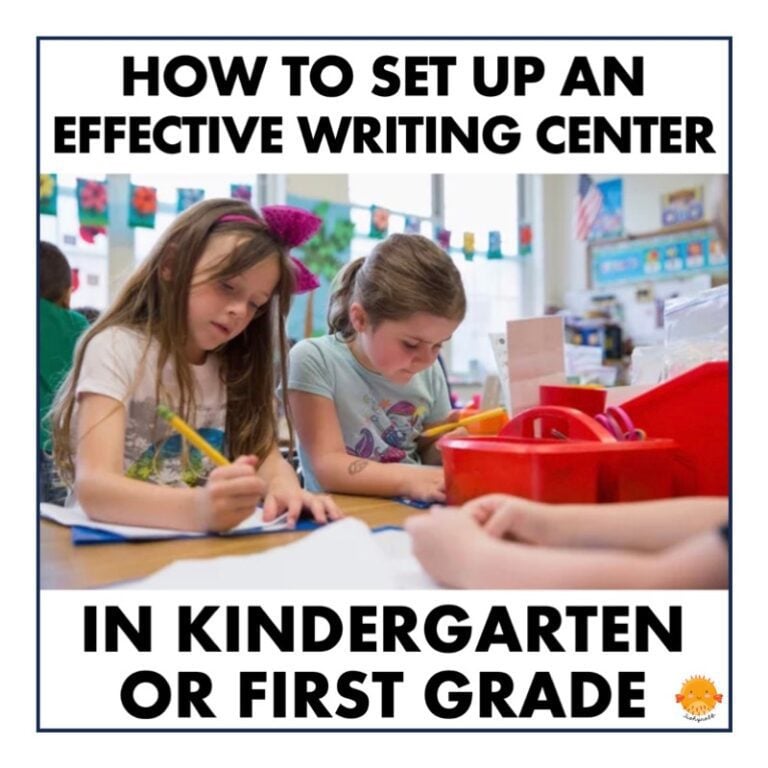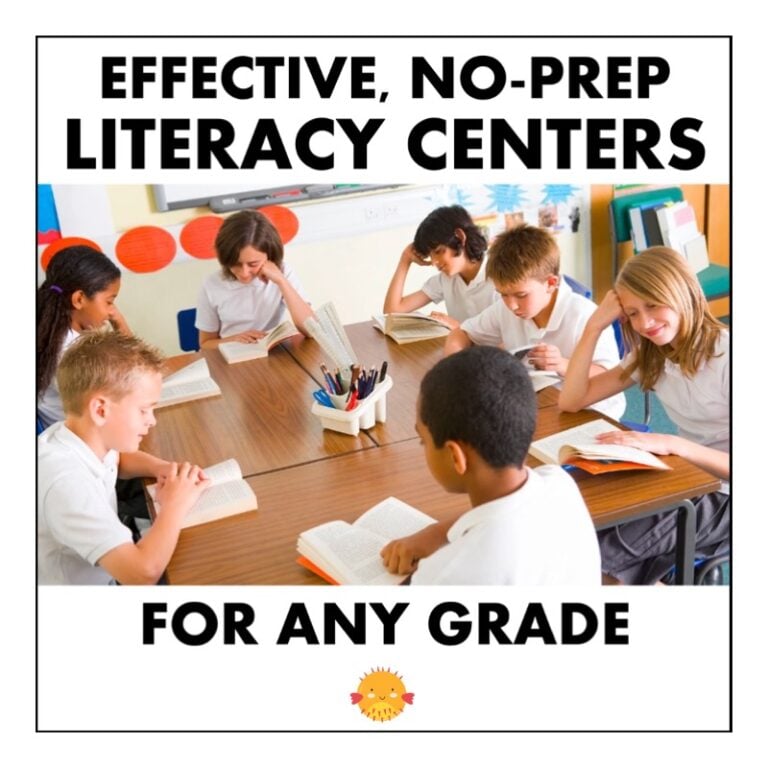
How to Teach Informational Writing Successfully in 3rd or 4th Grade
Writing is definitely not my favorite subject. And unfortunately, writing explanatory pieces is a major language arts standard in third and fourth grade (and other grade levels).
By the last grading period, my entire class is worn out from testing and ready for summer. Learning something new is the last thing on their minds. But guess what… I still have to figure out how to teach informational writing to these kids!
Last year, I decided to take the drastic measure of cancelling reading centers. That’s right… I canceled them.
Instead, our reading block was spent doing writer’s workshop. My students learned how to research and write and it all came together in one big informational writing project. It turned out to be really fun and my students grew into confident writers who produced some amazing work!
In this blog post, I’m going share student examples and the lesson plans that helped my third graders master this type of writing. These ideas are just as useful for fourth grade.
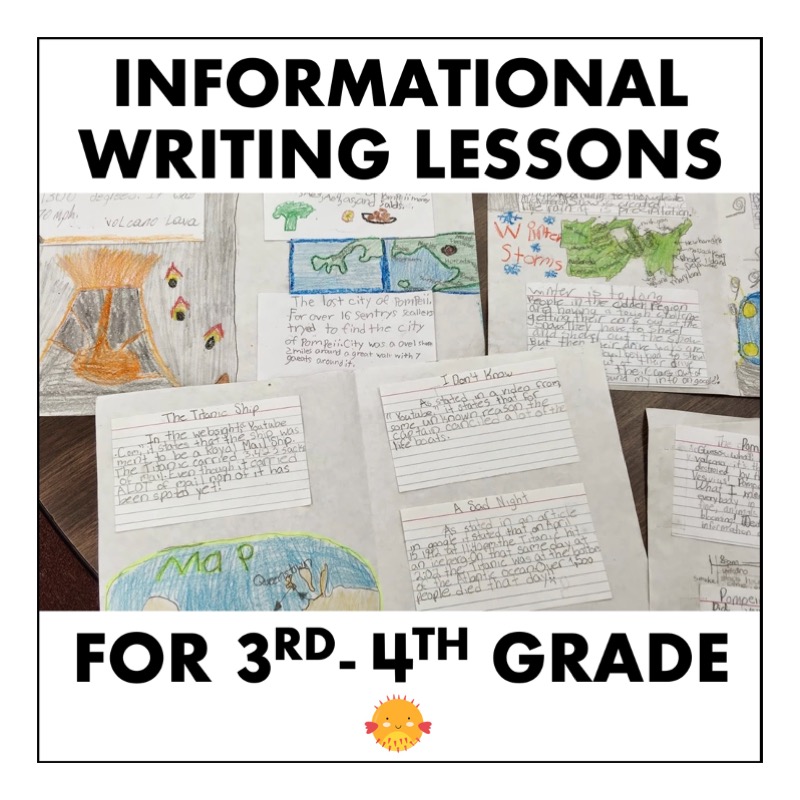
.
How to Teach Informational Writing
I started our informational writing unit with mentor texts. A mentor text is a piece of literature that students can use as a model for their own writing. It contains good examples of characteristics and features they should strive to include in their work.
When using mentor texts, it’s helpful to find several books on the same topic. That way students can easily see how the content and author’s purpose determine the type of writing, not the subject matter.
The books and texts I used were:
- The Vanishing Lake (fictional narrative)
- Loughareema, Or “The Vanishing Lake” (informational text)
- Lakes and Ponds (descriptive and procedural writing)
- Protect Our Lakes by Raking Leaves (persuasive writing)
.
(This post may contain affiliate links.)
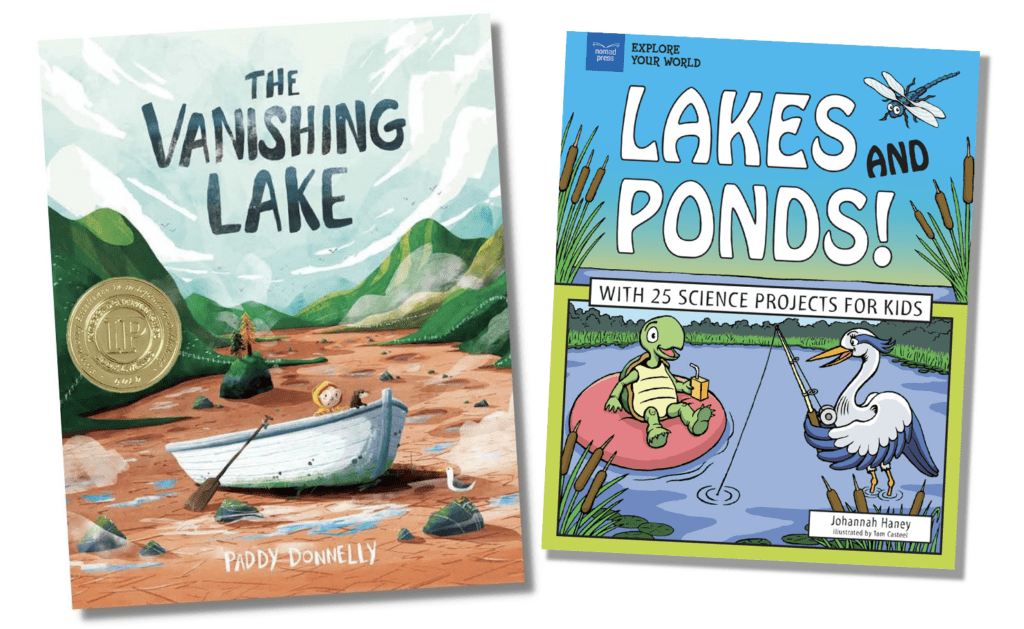
.
While reading these different pieces of text, we focused on the special characteristics of each type of writing.
We recorded this information on graphic organizers and created an anchor chart about informational text.
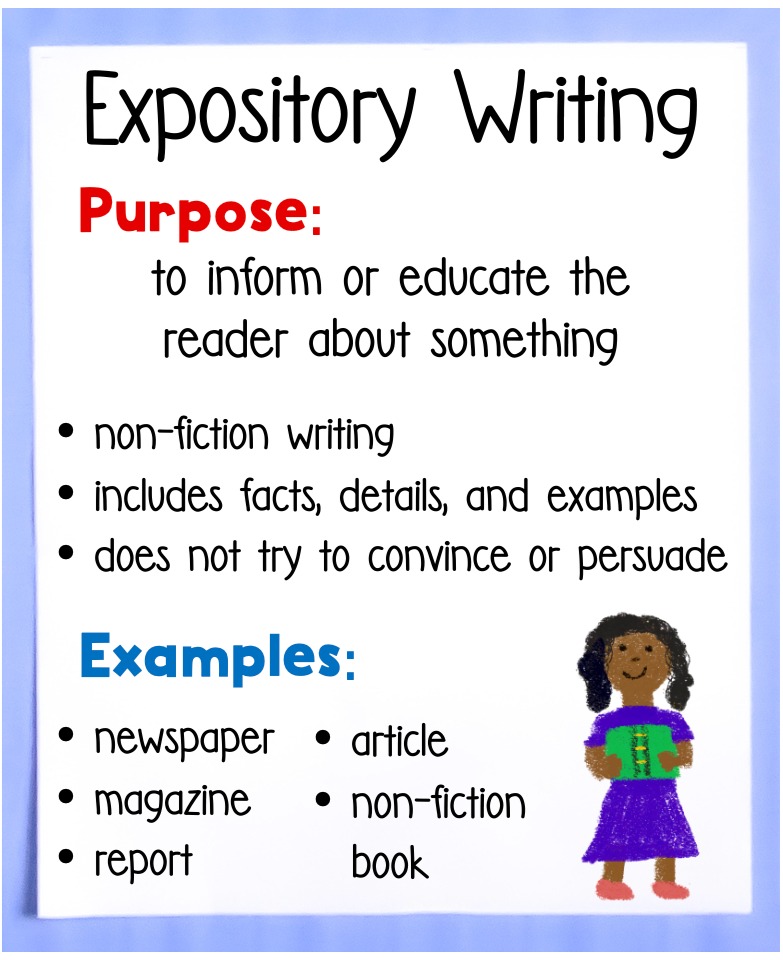
Finally, we made a list of all the places you can find informational writing such as:
- magazines
- newspapers
- non-fiction books
- newsletters
- articles
- reports
.
As I searched my file cabinet for more ideas on how to teach informational writing, I came across a stack of Time For Kids magazines.
Time For Kids is a fantastic example of expository writing for elementary students! Each magazine is divided into several articles around a broad topic. They are full of nonfiction text features which contain important information for the reader. The articles feature short paragraphs with clear headings that help students determine the main idea.
I knew immediately that Time For Kids would be the basis of my writing unit.
.
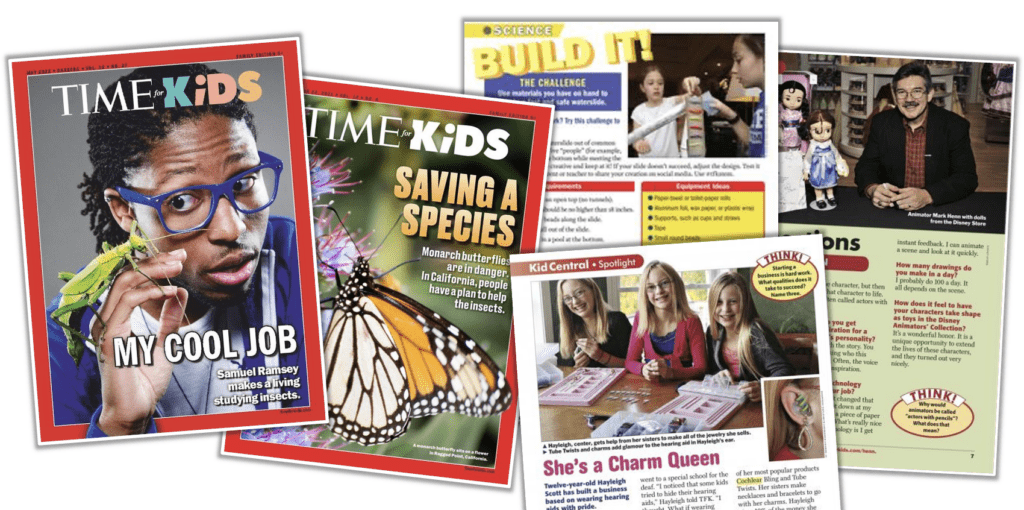
.
When it was time to start writers workshop, I pulled out the Time For Kids and told the class they would be designing and writing their own informational magazines. Talk about excited!
To get started, we brainstormed ideas for interesting topics and created a “topic menu”. Many students came up with a science topic or historical event they were curious about.
Some of their ideas:
- the San Francisco earthquake
- the Titanic
- Pompeii
- New York Yankees
- Martin Luther King Jr.
- Apollo Space Mission
- ancient Egypt
- Antarctica
- the Olympics
- extinct animals
.
The kids were all VERY excited to contribute.
Next, we analyzed Time For Kids to figure out what makes it so interesting. They noticed a lot of the same things I did: The paragraphs were short with text features to go with them. There were a lot of super interesting facts and each section had its own heading to show the main idea. They pointed out the colorful photos and illustrations and interactive features like links to videos.
Once students zeroed in on the specific topic they wanted to write about, it was time to do some research. By now they understood that informational writing isn’t stuff you just make up. We talked about how to conduct research (an important skill that takes a lot of practice for elementary school kids).
Some of the mini lessons we had were:
- where to find good information
- how to paraphrase and write in your own words
- how to cite your source
- how to take notes
.
I also made a list of acceptable websites they could use for research. A few safe, kid-friendly search engines include:
- KidRex – http://www.kidrex.org/
- Kiddle – www.kiddle.co
- Fact Monster – https://www.factmonster.com/
- KidzSearch – http://www.kidzsearch.com/
- Swiggle – http://www.swiggle.org.uk/
- Sweet Search – https://www.sweetsearch.com/ (limited content curated by educators)
.
We decided it would be a good idea to use index cards to organize facts and information for each paragraph or sub-topic. So I passed out piles of index cards. Finally, they were ready to go!
Most of the class chose to partner up for their first writing piece. They spent several days researching with some asking to visit the media center to find even more information. This made for a great collaborative learning activity!
During my reading groups, I looked over what they had done so far and offered guidance as needed. Some things they had trouble with at first were writing good headings for each paragraph and including a topic sentence.
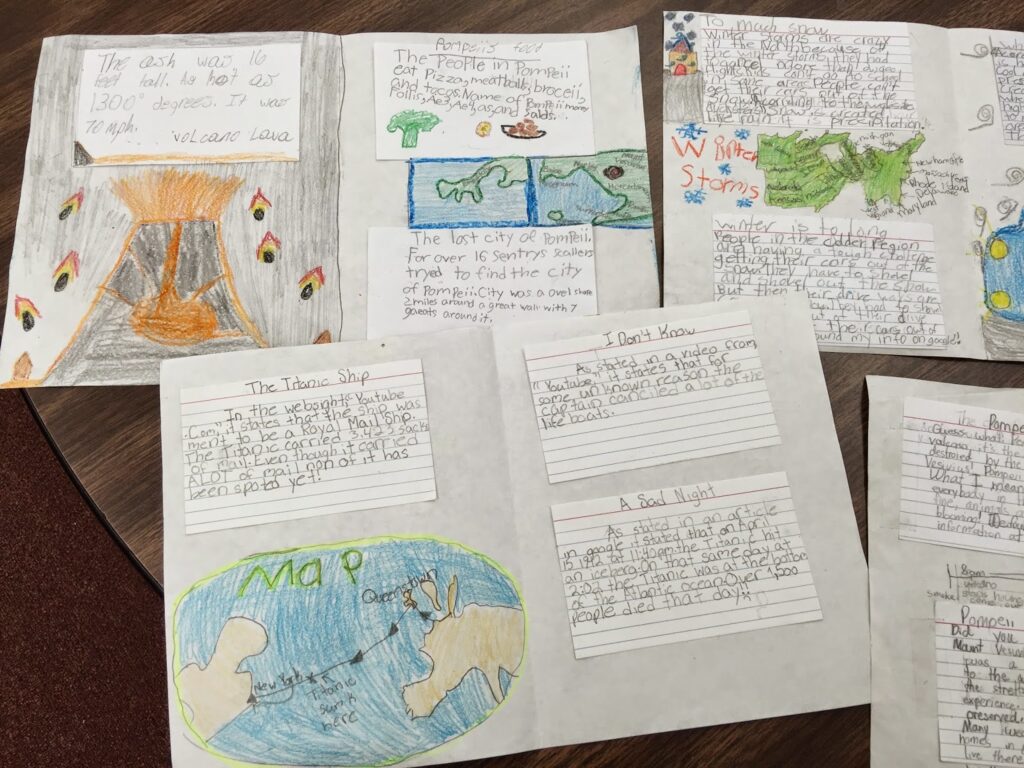
.
After our first round of publishing, the kids decided they wanted to do more, so they all chose a new writing topic! Some wanted to work alone because they were excited to research something specific. Others chose to partner up again. It was great seeing them so absorbed in their own writing.
Most of the class spent a full week conducting research and another week writing, illustrating, and editing their magazines.
Even some of my most reluctant young writers produced amazing work. Take a look at these finished pieces of informational writing:
.
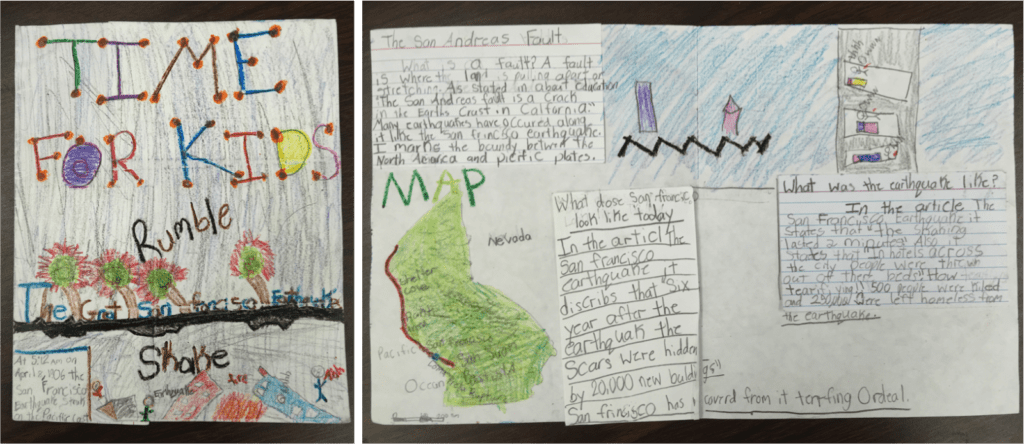

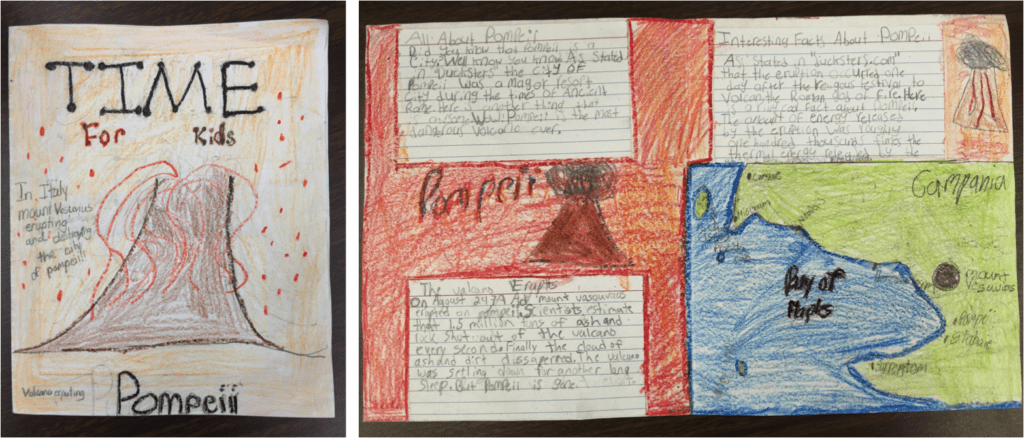
.
Their hard work really paid off! By the end of the unit, they were all very confident in their writing.
This was such an enjoyable and effective way to teach informational writing that I plan to use it every year. I spent some time laminating my old Time For Kids magazines so they will stand up to repeated use – because I know I’ll be using them again and again!
If you are wondering how to teach informational writing, I hope you now have some new ideas to try with your students!


